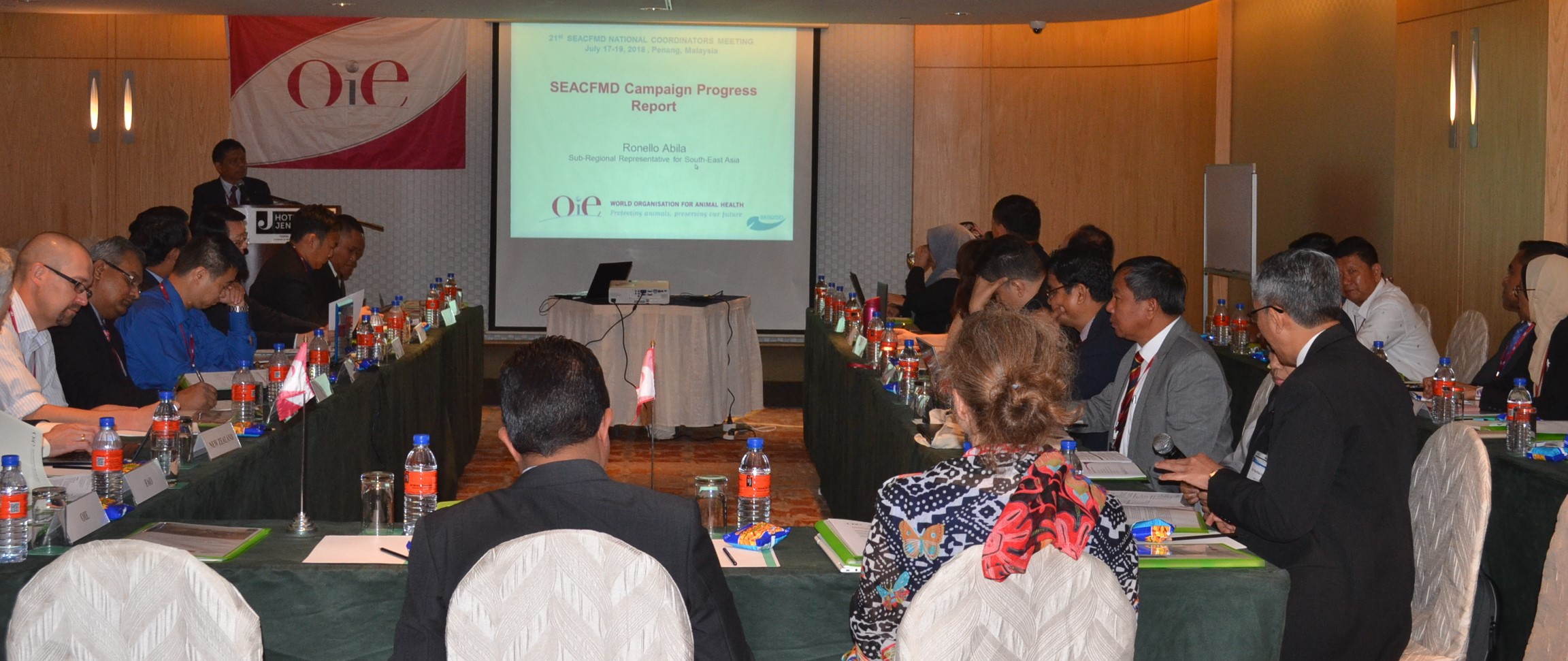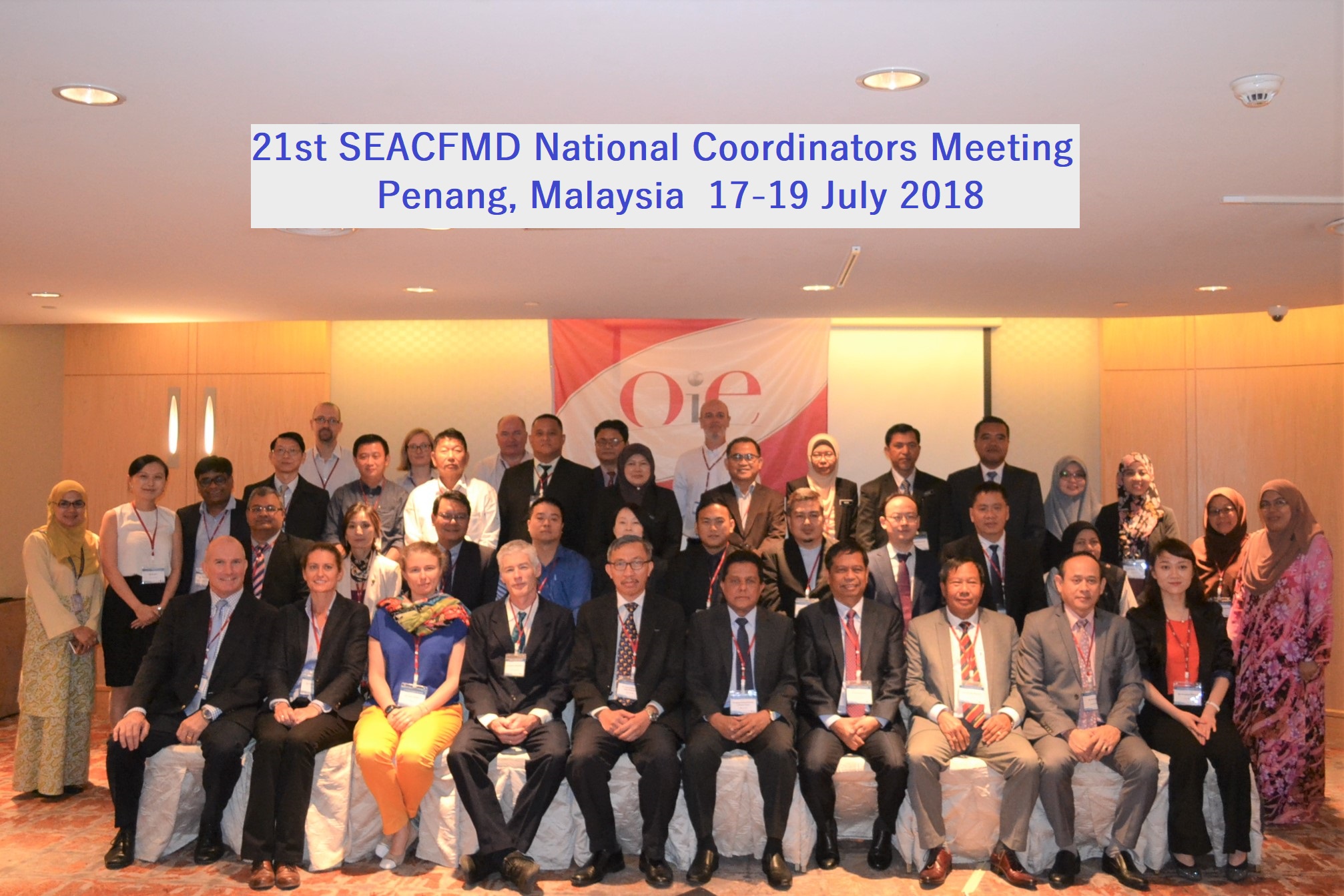


The 21st OIE SEACFMD National Coordinators Meeting gathered around 50 participants, including delegates from the SEACFMD Member Countries and neighbouring countries, representatives from OIE FMD Reference Laboratories and FMD research institutes, OIE staff from Headquarters and Regional Representation for Asia and the Pacific and Sub-Regional Representation for South-East Asia, and observers.
The meeting reviewed the progress of the SEACFMD Campaign, the latest regional FMD situation, and the recent activities in the OIE FMD reference laboratories in Thailand and China. Following its first detection in 2015 in the SEACFMD region, the O/ME-SA/Ind-2001d strain has spread rapidly and affected Lao PDR, Vietnam, Myanmar, China, Thailand, and Mongolia within a short time period. This new strain has been reported to cause continued outbreaks in China and Thailand. The serotype Asia 1 was detected in January 2017 from field outbreaks in Myanmar, but the onward transmission has not been noted so far. It is noted that the majorities of viruses were not genotyped in South-East Asia, presenting a significant gap for monitoring of the regional molecular epidemiology including the introduction and spread of new FMD virus strains. The discussions also highlighted that regional FMD picture based on passive surveillance is incomplete; active surveillance is highly desirable to define and monitor levels of infection and to differentiate risks in different regions and species.
Selected presentations from SEACFMD Member Countries were presented to showcase the good practices and lessons learned in implementing the SEACFMD Roadmap, namely in the areas of public-private partnership in disease management (Malaysia), FMD sero-surveillance study for a better understating of FMD risks in different areas and species (Myanmar), field outbreak investigation (Lao PDR), updating the national FMD control programme for application of OIE endorsement (Vietnam), establishing border zones to promote safer cross-border trade of animals (China), and cost-benefit analysis of maintaining FMD freedom (Indonesia). The study methodology, which was usually designed through the collaboration between country authorities, the OIE SRR and supporting partners, was elucidated and justified in each presentation. It is expected that these case study examples will further encourage and inspire countries to apply science-based FMD control or prevention approaches. The plenary presentations were followed by a poster session, which gave an opportunity for all Member Countries to present the progress against the SEACFMD Roadmap and for partners to present the latest FMD-related laboratory/field activities.
In the end of the meeting, the SEACFMD campaign action plan for 2018/2019, including the proposed topics to be discussed at the upcoming 23rd SEACFMD Sub-Commission Meeting in November 2018, was discussed. The meeting concluded with key recommendations which will serve as a guideline for the SEACFMD Campaign’s work in the following year. The discussions were fruitful, and the recommendations adopted during the meeting will be submitted to the next OIE SEACFMD Sub-Commission Meeting for endorsement.

